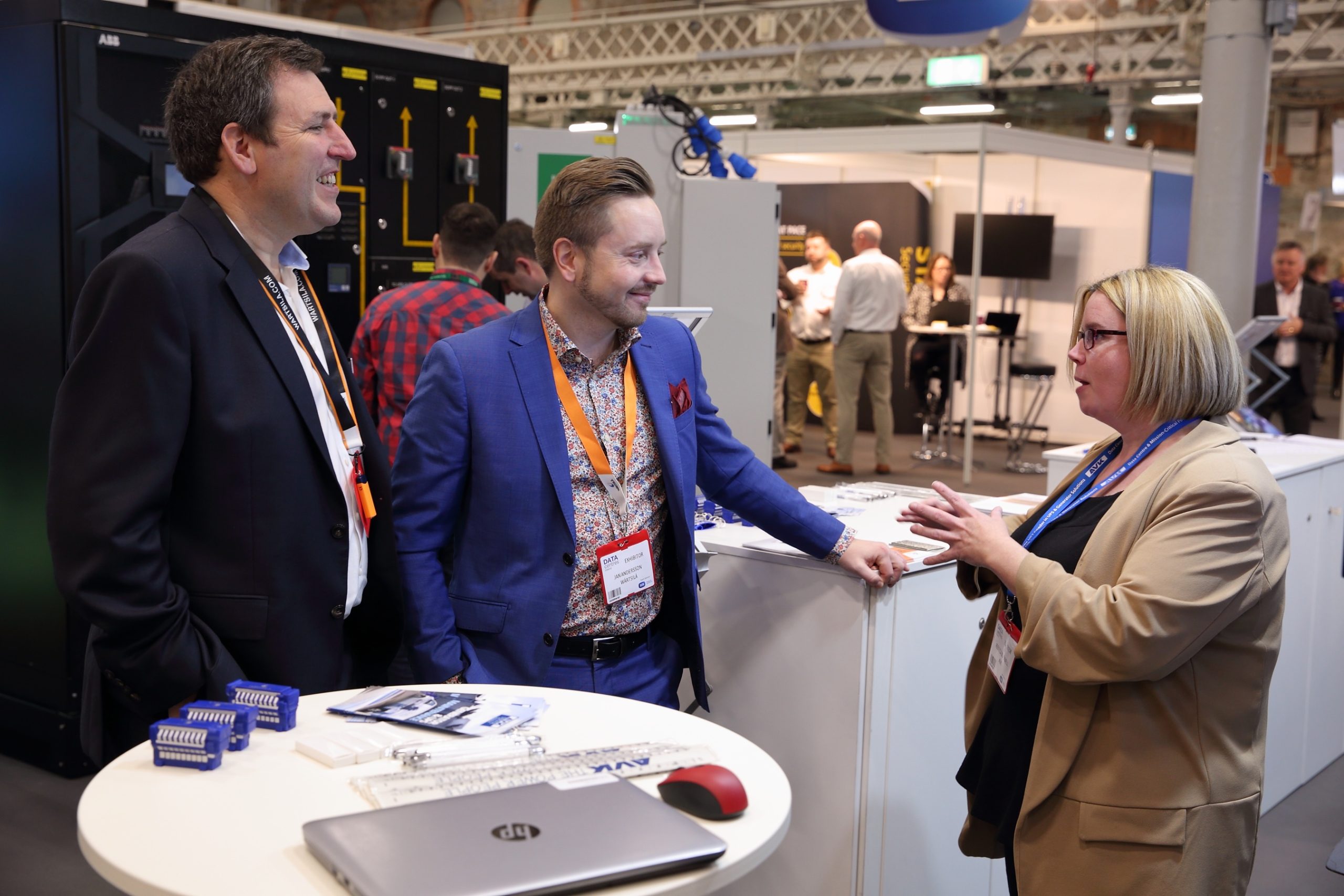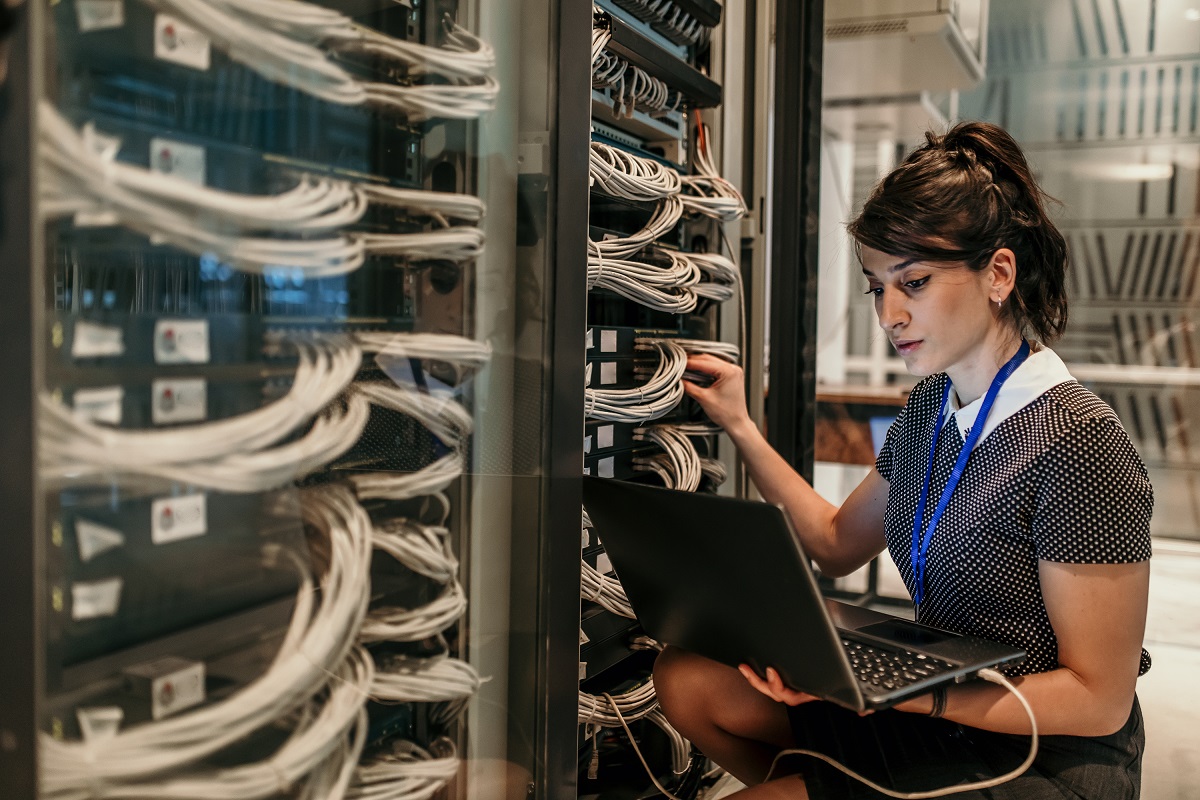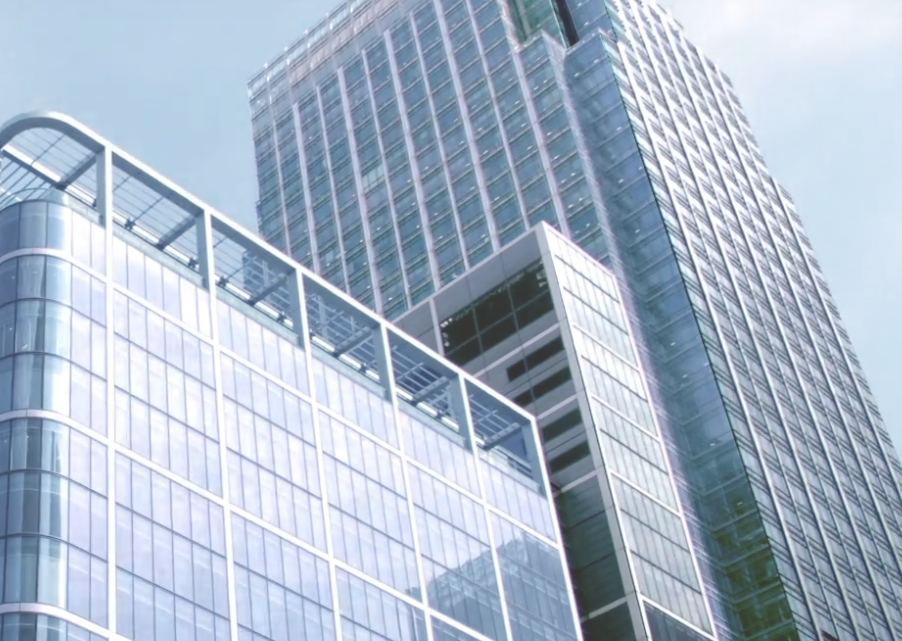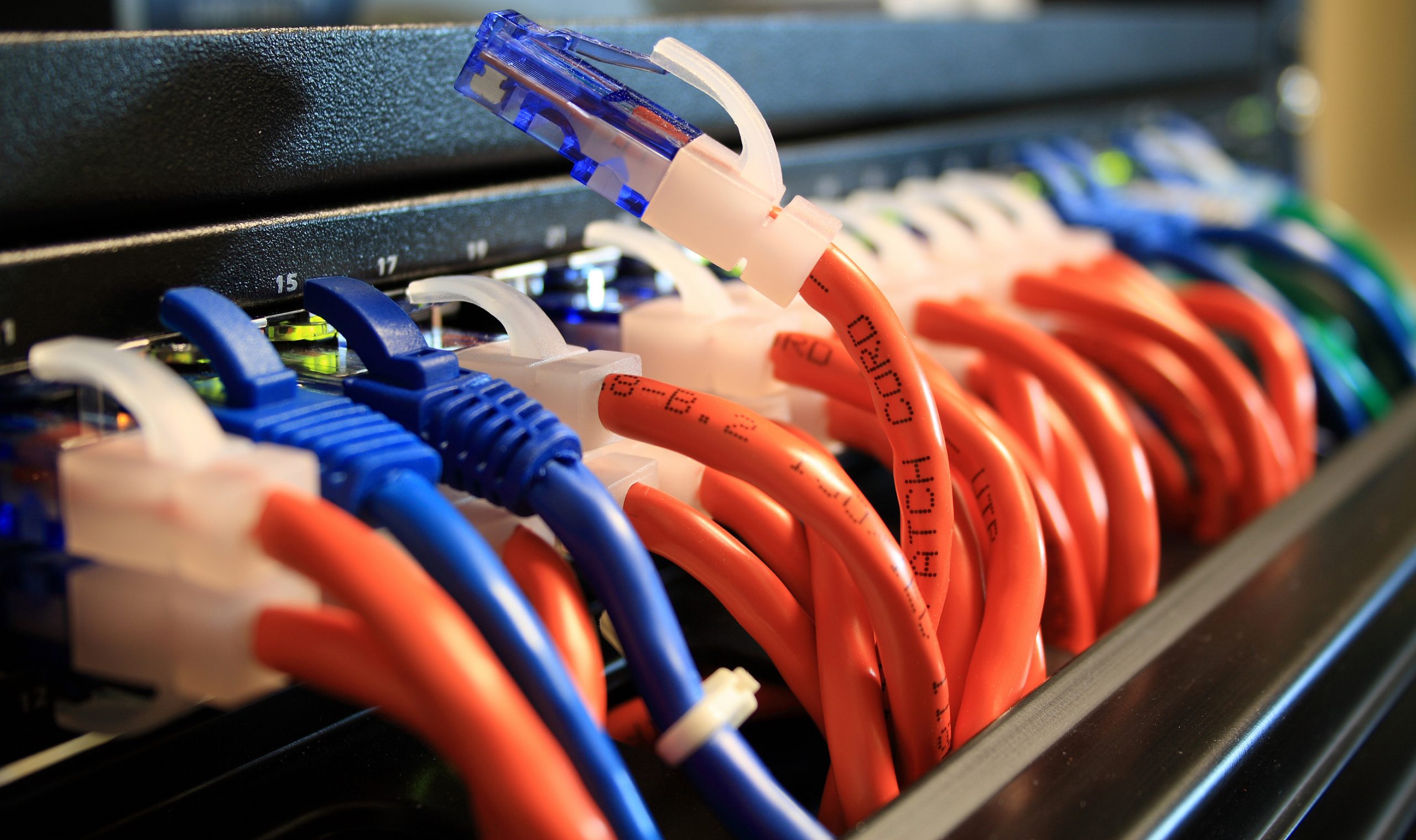Uncategorised
Cooling
Data
Data Centres
Scalable Network Attached Solutions for Modern Infrastructure
Uncategorised
Paying attention to data centre storage cooling
Authored by Neil Edmunds, Director of Innovation, Iceotope
With constant streams of data emerging from the IoT, video, AI and more, it is no surprise we are expected to generate 463EB of data each day by 2025. How we access and interact with data is constantly changing and is going to have a real impact on the processing and storage of that data. In just a few years, it's predicted that global data storage will exceed 200ZB with half of that stored in the cloud.
This presents a unique challenge for hyperscale data centres and their storage infrastructure. According to Seagate, cloud data centres choose mass capacity hard disk drives (HDDs) to store 90% of their exabytes. HDDs are tried and tested technology, typically found in a 3.5in form factor. They continue to offer data centre operators cost effective storage at scale. The current top-of-the-range HDD features 20TB capacity. By the end of the decade that is expected to reach 120TB+, all within the existing 3.5in form factor.
The practical implications of this show a need for improved thermal cooling solutions. More data storage means more spinning of the disks, higher speed motors, more actuators – all of which translates to more power being used. As disks go up in power, so does the amount of heat produced by them. Next, with the introduction of helium into the hard drives in the last decade, performance has not only improved, thanks to less drag on the disks, but the units are now sealed.
There is also ESG compliance to consider. With data centres consuming 1% of global electricity demand and cooling power accounting for more than 35% of a data centre’s total energy consumption, pressure is on data centre owners to reduce this consumption.
Comparison of cooling technologies
Traditionally, data centre environments use air cooling technology. The primary way of removing heat with air cooling methods is by pulling increasing volumes of airflow through the chassis of the equipment. Typically, there is a hot aisle behind the racks and a cold aisle configuration in front of the racks which dissipates the heat by exchanging warm air with cooler air. Air cooling is widely deployed and well understood. It is also well engrained into nearly every data centre around the world. However, as the volume of data evolves, it is becoming increasingly likely that air cooling will no longer be able to ensure an appropriate operating environment for energy dense IT equipment.
Technologies like liquid cooling are proving to be a much more efficient way to remove heat from IT equipment. Precision liquid cooling, for example, circulates small volumes of dielectric fluid across the surface of the server, removing almost 100% of the heat generated by the electronic components. There are no performance throttling hotspots and no front to back air cooling, or bottom to top immersion constraints which are present in tank solutions. While initial applications of precision liquid cooling have been in a sealed chassis for cooling server components, given the increased power demands of HDD, storage devices are also an ideal application.
High density storage demands
With high density HDD, traditional air cooling pulls air through the system from front to back. What typically occurs in this environment is that disks in the front become much cooler than those in the back. As the cold air comes and travels through the JBOD device, the air gets hotter. This can result in a 20°C or more temperature differential between the discs at the front and back of the unit depending on the capacity of the hard drive.
For any data centre operator, consistency is key. When disks are varying by nearly 20°C from front to back, there is inconsistent wear and tear on the drives leading to unpredictable failure. The same goes for variance across the height of the rack, as lower devices tend to consume the cooler air flow coming up from the floor tiles.
Liquid cooling for storage
While there will always be variances and different tolerances taking place within any data centre environment, liquid cooling can mitigate for these variances and improve consistency. In 2022, Meta published a study showcasing how an air cooled, high density storage system was reengineered to utilise single phase liquid cooling. The study found that precision liquid cooling was a more efficient means of cooling the HDD racks with the following results:
The variance in temperature of all HDDs was just 3°C, regardless of location inside the JBODs.
HDD systems could operate reliably in rack water inlet temperatures up to 40°C.
System-level cooling power was less than 5% of the total power consumption.
Mitigating acoustic vibrational issues.
While consistency is a key benefit, cooling all disks at a higher water temperature is important too. This means data centre operators do not need to provide chilled water to the unit. Reduced resource consumption – electrical, water, space, audible noise – all lead to greater reduction in TCO and improved ESG compliance. Both of which are key benefits for today’s data centre operators.
As demand for data storage continues to escalate, so will the solutions needed by hyperscale data centre providers to efficiently cool the equipment. Liquid cooling for high density storage is proving to be a viable alternative as it cools the drives at a more consistent temperature and removes vibration from fans, with lower overall end-to-end power consumption and improved ESG compliance. At a time when data centre operators are under increasing pressure to reduce energy consumption and improve sustainability metrics, this technology may not only be good for the planet, but also good for business.
Enabling innovation in storage systems
Today’s HDDs are designed with forced air cooling in mind, so it stands to reason that air cooling will continue to play a role in the short term. For storage manufacturers to embrace new alternatives demonstrations of liquid cooling technology, like the one Meta conducted, are key to ensuring adoption. Looking at technology trends moving forward, constantly increasing fan power on a rack will not be a long term sustainable solution.
Data halls are not getting any larger and costs to cool a rack are increasing. The need for more data storage capacity at greater density is exponentially growing. Storage designed for precision liquid cooling will be smaller, use fewer precious materials and components, perform faster and fail less often. The ability to deliver a more cost effective HDD storage solution in the same cubic footprint, delivers not only a TCO benefit but contributes to greater ESG value as well. Making today's technology more efficient and removing limiting factors for new and game changing data storage methods can help us meet the global challenges we face and is a step forward towards enabling a better future.
Click here for more thought leadership.
Isha Jain - 25 July 2023
Hyperscale Data Centres: Scale, Speed & Strategy
Uncategorised
NTT launches hyperscale data centre campus in Chennai
NTT has announced the launch of its latest hyperscale data centre campus, Chennai 2, and the arrival of its subsea cable system, MIST, in the city. The campus, located in Ambattur and spread across 6 acres, is a project with a total planned capacity of 34.8MW critical IT load from two data centre buildings. The first facility has a 17.4MW IT load capacity.
MIST subsea cable, constructed by consortium members including NTT Communications India Network Service and Orient Link, is the first cable system for the company to directly provide connectivity to and from India. It spans an impressive 8,100km and will connect Malaysia, India, Singapore and Thailand, offering cutting-edge connectivity capabilities. The system also represents India's first cable landing of a 12 fibre pair capacity, capable of carrying more than 200TBPS of data.Chennai’s location has opened three distinct opportunities for these projects. The first is addressing the demand for high quality data centre infrastructure driven by its digital ecosystem that includes traditional and new economy businesses; the second is positioning the state as a disaster recovery (DR) site for enterprises with primary IT infrastructure in other cities; and third is leveraging global connectivity to offer data centre capacity to markets in South East Asia, where capacity is in short supply. These capabilities will transform it into the digital gateway connecting the country to the world.Adding further, Shekhar Sharma, CEO and Managing Director, NTT Global Data Centres & Cloud Infrastructure and NTT Communications, says, “The launch of the state-of-the-art data centre campus along with the MIST cable system in Chennai mark major milestones in our journey in India. These projects are perfect examples of Japanese design quality and global expertise, tailored to the Indian market. They have reinforced our position as the leader for data centre services in India and helped transform Chennai into the new destination for data centres in South East Asia. We’re glad to be able to play a part in making Chennai the gateway connecting digital businesses across India, South East Asia, and the world. With our capabilities, we’re eager to help our clients unlock greater value from their digital transformation efforts.”
Isha Jain - 30 June 2023
Uncategorised
Veeam appoints Dustin Driggs as Chief Financial Officer
Veeam Software has announced the appointment of Dustin Driggs as the company’s Chief Financial Officer (CFO). Dustin will lead Veeam’s global financial function, including strategy and reporting, as Veeam continues to gain market share and provide secure backup and fast, reliable recovery that keeps businesses running.
Dustin has more than 30 years’ experience in successfully building and managing large multinational businesses. He joins Veeam from Barracuda Networks where he worked for over 16 years, most recently as Chief Financial Officer and Senior Vice President, leading the finance and accounting function. Prior to Barracuda Networks, Dustin held senior leadership roles at Cisco Systems and PwC.
“Veeam is helping to keep businesses running when the unexpected happens, whether it’s ransomware, natural disasters, human error, outages, or a cyber attack. That’s an incredible value proposition that in turn creates huge opportunity in a fast-growing market,” says Dustin. “I’m excited to join such a talented and innovative team, and look forward to the opportunity to contribute to Veeam’s continued global success.”
“Dustin brings great experience, insights and skills to Veeam,” says Anand Eswaran, CEO at Veeam. “With more than 5,000 employees, 450,000 customers and well over $1 billion in ARR, it’s an exciting time in our development and evolution; we’re growing rapidly by keeping businesses running. In a digital world, our value proposition of proactively protecting data across every type of environment and helping companies rapidly recover from unexpected events is incredibly critical to every organisation. Dustin is a valuable addition to our strong leadership team at Veeam, and I’m confident his expertise and experience will make a great impact here.”
Beatrice - 23 February 2023
Uncategorised
More reasons than ever to attend DataCentres Ireland
When the doors open on this year’s DataCentres Ireland Conference and Exhibition it will be the biggest and most complete event ever staged in Ireland, for data centres and other critical environments.
Taking place at the RDS, Dublin on the 16 and 17 November 2022, this free to attend event features:
Over 100 exhibitors showcasing thousands of products
New for 2022 – three conference streams
Over 80 speakers – made up from industry leaders and experts
New for 2022 - CPD Accredited Workshop Programme - to further your knowledge and training
Huawei sponsored additional exhibition hall
Largest gathering of standby power engines and turbines
Learn about microgrids
Enter the hydrogen debate – how might it work? When might it happen?
Leading HVAC and cooling solution providers
Click here to register online for free
DataCentres Ireland offers solutions and new ideas to a wider audience than just Data Centres.
Data Centres are the most critical of critical environments as the impact of even a slight failure would be catastrophic.
DataCentres Ireland is your opportunity to see, hear, network and discuss the latest thinking of ideas, best practice, technology, and systems which can be employed to deliver robust, resilient, effective, efficient, safe and secure environments that work.
These principles and thinking go beyond data centres to all critical environments, whether that be FM managers responsible for operating theatres, production lines, telecoms, server rooms, control rooms, etc...where continuity of service is a must.
Free to attend, DataCentres Ireland is your opportunity to hear from business leaders and industry experts that could benefit your organisation… Whatever industry sector you are from.
Click here to register online for free
Click here to view the latest conference programme - For more detail please view the sessions in the individual conference rooms by day.
Some of the 75 speakers include:
Michael McCarthy – Cloud Infrastructure Ireland
Eddie Kilbane – Kilon Holdings
Donal Travers – IDA Ireland
Lee Carroll, Lead Analyst for Energy inc. Electricity, SEAI
Click here to view the full speaker list
Click here to register online for free
The exhibition
With over 100 exhibitors, this is your opportunity to see the latest product, solutions, technologies, and service providers that can assist you in creating secure and resilient critical infrastructure.
Key areas on display include:
Power and Standby Generation
Cooling and Environmental Control/Management
Cabling
Energy Efficiency and Management
Cleaning
Sustainability and the Circular Economy
Click here to register online for free
To find out more about DataCentres Ireland and how you can become involved contact the Datacentres Team via email: datacentres@stepex.com or call +353 (0) 89 448 8365
Carly Weller - 19 October 2022
Data
Data Centres
Scalable Network Attached Solutions for Modern Infrastructure
Uncategorised
Dell Technologies to provide next generation business continuity for hybrid IT
Schneider Electric has teamed up with strategic partner Dell Technologies to deliver an automated shutdown solution that is ideal for hyperconverged infrastructure. It focuses on the seamless integration of APC PowerChute Network Shutdown with Dell VxRail Clusters by communicating over the network with the APC UPS (Uninterruptible Power Supply).
Together, Dell and Schneider Electric are working on the next generation of ensuring business continuity for sprawling IT infrastructure with products that protect against unplanned power events. Developed in full collaboration with Dell Technologies, this new offer is part of Schneider Electric’s modernised EcoStruxure IT software, which is designed to make hybrid IT infrastructure more resilient, secure, and sustainable.
The modernisation of EcoStruxure IT addresses how Data Centre Infrastructure Management (DCIM) has changed tremendously since it first emerged as a software category. Today’s hybrid IT environment is challenging even the most sophisticated CIO organisations. We call this trend DCIM 3.0. Earlier this month, Schneider Electric announced that it has evolved DCIM from individual data centres to cover the full spectrum of sprawling, hybrid IT. The company is investing in EcoStruxure IT to provide more capability, flexibility, and deployment options than ever before for enterprises and colocation facilities everywhere in the world.
Avoid corrupt data and damaged hardware
The integration of APC PowerChute with Dell VxRail Clusters is part of Schneider Electric's ongoing effort to reduce the complexity of the hybrid IT environment. When power is interrupted and UPSs extend past their battery runtime, the company's partners can’t just flip a switch and shut down operations. They follow a protocol. And if they don’t have trained staff on site, they could be looking at the expensive possibility of lost work, corrupt data, and damaged hardware at their traditional data centres and also at hundreds or thousands of unattended distributed sites.
But PowerChute integrated directly with the Dell VxRail API enables a safe shutdown of virtual machines followed by the VxRail cluster including hosts; often referred to as a graceful shutdown with no loss of work, no data corruption, and no hardware damage. This new offer includes the option for automatic restart so when the power returns, your systems return also, ensuring minimal downtime.
Simple and fast for partners to deploy with easy integration
Dell Technologies and Schneider Electric are making business continuity easy for its partners because they have figured out the behind-the-scenes technology to make this new product simple and fast for its partners to deploy with easy integration into their systems. PowerChute has been revolutionised in the past few years and in addition to a graceful shutdown and restart, it saves space and reduces hardware needs because you don’t need to deploy it on a separate machine.
We live in a time of complex, distributed IT architectures and this new offer is another way Schneider Electric and Dell Technologies are joining forces to leverage complimentary portfolios of products and services to create innovative, end-to-end technology solutions that are easy to purchase, deploy, and operate. To learn more, please watch this helpful video, visit our Dell Technologies Alliance page, and learn more about our EcoStruxure IT software.
Carly Weller - 20 July 2022
Uncategorised
Port Blockers – physical first level security solutions for IT and AV hardware interface systems
Every year, businesses spend huge amounts of money and time dealing with infected computer systems and policing unauthorised access. Whilst it remains necessary to have systems in place should either of these occur, it is far better to prevent them from happening at all.
Facilities managers and installers of IT/AV systems can do just that with Lindy’s inexpensive, easy to fit, and highly effective family of Port Blockers. These handy items simply prevent systems from being compromised in the first place by physically preventing unauthorised access.
The products block users from hard-wiring phones, pen-drives, MP3 players and other personal devices to USB ports and come with their own colour coded lock and key combination should access or removal of the lock be desirable. They are easy to install and with the key easy to un-lock. With virtually no maintenance costs and additional keys and locks available, these devices provide almost unlimited scalability.
Delivering the ability to block all types of USB ports, including Type C and Type A, and available in versions for PC/Laptop style products and tablets, IT security managers can be sure of finding the right product to suit their needs. To use, simply plug the ‘keylock’ into the port, release the latch and the lock remains in place. Plug the key back into the lock to remove.
The protection does not end there however, as the range can also block access to RJ-45 network ports as well as USBs. The Lindy RJ-45 Port Blocker blocks open network ports to prevent users from connecting cables, devices or inserting foreign objects without permission.
With SD Port Blockers, system administrators can physically prevent users from inserting SD cards and other SD devices to their computers to copy data or introduce viruses.
All the products come with a two-year warranty and are available in a wide variety of colour coded choices and pack sizes, so facilities managers and IT professionals can always be sure they have the right level of stock.
Carly Weller - 29 June 2022
Data Centres
Uncategorised
A recipe for award-winning data centre digital transformation
Newcastle City Council has recently transformed its data centre operations, consolidating its main IT systems into a single data hall, with upgraded power and cooling infrastructure and new management software by Schneider Electric. In the process, it has improved resilience and uptime, simplified the management of all its infrastructure equipment, and made part of its data centre available to other organisations, which helps to offset the costs of its operations.
Setting the scene at Newcastle City Council
Newcastle City Council employs over 5,000 people, providing local-government services to citizens throughout the city. Its data centre hosts numerous applications, including those supporting council tax collection, social services, library services, education and road traffic management. It also has links with the IT systems of other essential public-service bodies such as the NHS and police. Given the vital nature of these services, the Council’s IT systems must run reliably around the clock and any downtime will have a significant effect on the local populace.
The challenge: tangled legacy issues
The Council’s IT systems had grown steadily over the years to support the evolution of its e-Government approach with the automation and digitisation of many of its activities. But the situation had evolved to the point where the data centre layout had become haphazard and disorganised, many infrastructure elements were nearing their end of life and in need of regular maintenance, and management of the infrastructure was labour intensive and time consuming.
“We had three different server rooms with links between them,” says James Dickman, Senior ICT Solutions Analyst at Newcastle City Council. “Telecoms routers were in one room and servers in another, so it was difficult to manage them. We also had separate UPS systems in each room, and air handlers for cooling, many of which were old and in need of replacement.”
“Also, we had the inevitable ‘spaghetti effect’ of legacy systems with numerous cables installed under the floor over many years, now causing choke points and were becoming very difficult to manage and maintain.”
The solution: standardisation and consolidation
As part of a refurbishment of its Civic Centre, Newcastle City Council consolidated its data centre into a single room with a raised modular floor. Following a competitive tender, the Council chose EcoStruxure for Data Centers, Schneider Electric’s IOT-enabled, open and interoperable system architecture for the new facility. The data centre was designed and built by Schneider Elite Partner, Advanced Power Technology (APT).
A further benefit of the EcoStruxure for Data Centers solution is a more effective approach to data cable management. More structured cabling provides greater certainty about connectivity within the data centre, reducing complexity and the potential for human error, improving maintenance and serviceability with easier and safer access. The cable management solution also increases cooling efficiency by improving airflow in the cabinets, as well as providing improved scalability by simplifying moves, adds and changes in the space.
EcoStruxure IT aiding Newcastle City Council to make the most of its data centre power
The new data centre is managed using Schneider Electric’s next generation data centre infrastructure management (DCIM) software, EcoStruxure IT Expert. In addition, the technical environment is being monitored using an APC NetBotz appliance together with temperature and humidity sensors.
The visibility this gives to the operation of the data centre is a marked improvement on the previous monitoring capability, according to James.
The monitoring and management capabilities of EcoStruxure IT enables the City Council’s data centre operations team to identify any emerging concerns early – such as batteries suffering impaired performance as they near end of life. Armed with such information, upgrades and maintenance can be scheduled and performed with the minimum of downtime, avoiding any disruption to the ongoing provision of services to both internal and external customers.
Benefits: greater insight and more efficient operation
The results have been greatly improved visibility of the data centre operations and consequently provided a greater ability to respond to issues as they arise. “We know everything is being monitored constantly and that gives us great reassurance,” says James. “Any issue gets flagged and can be routed by the system to mobile devices, like smart phones, which is very useful if events occur out of hours.”
Another key benefit of the software is that the power consumption of each of the IT equipment racks can be monitored. Power consumption data not only helps the Council to improve its own electrical efficiency, but also opens up elements of the facility to co-operation with other bodies.
For example, about 10% of the data centre’s real estate is now leased out to other public sector bodies including HM Courts and the arbitration service ACAS. By carefully monitoring the power supply of each rack, the Council can charge accurately for its hosting services, producing a revenue stream that helps to offset its overall operating costs.
It also makes possible the operation of a reciprocal disaster-recovery operation with another council which greatly improves the resilience and continuous uptime of each body.
Schneider Electric and APT meet the data centre needs of Newcastle City Council
James says, “Working together, Schneider Electric and its Elite Partner, APT were able to deliver a new data centre while the building was being refurbished on what was effectively a construction site. They drew up the specification, delivered the solution and had everything up and running with no unplanned downtime! Such pressure on all parties involved means it’s not an experience I would like to go through again – but delivery of the new facility was highly successful.”
“The project to design and deliver a new data centre for Newcastle City Council demonstrates how each service and product line provided by Advanced Power Technology comes together to deliver on performance and resilience,” says John Thompson, Director of APT.
James concludes, “As a public body we are always looking for cost and energy efficiencies. Schneider Electric and APT were able to design and deliver an overall data centre solution that meets our needs and our expectations. The new facility enables us to meet our service commitments to all stakeholders while minimising the carbon impact of delivering IT services.”
Carly Weller - 20 June 2022
Uncategorised
Commtech Asia and Logi-tek (UK) form Sygna
Commtech Asia and Logi-tek (UK), two international independent commissioning management and technical services specialists have announced the inception of a new joint company, Sygna.
Following the successful merger of the two brands in 2021, Sygna marks a new chapter for the organisation, accelerating its mission to deliver an expansive offering of commissioning management and integrated project solutions across the APAC and EMEA regions. Further, the new company will bring its global expertise under one roof, providing customers with truly 24/7 technical support coupled with an expert understanding of local and cultural practices from its team of over 200 engineering and commissioning professionals.
“Today our mission is to be the global leader in the provision of commissioning management, delivering advanced technical spaces with exceptional intelligence, while providing customers with unparalleled service on a global scale”, says Andy Knellar, Global Managing Director, Client Solutions and Development, Sygna. “The creation of Sygna is the start of an exciting journey for both our company and our customers, fuelling our ambition to leverage our expertise within our existing core markets and additional high-growth industries such as, pharmaceutical, commercial, and industrial/giga factories.”
Both businesses have a long-established history of delivering high-quality commissioning and technical services for organisations across key mission-critical sectors. Today, Sygna remains trusted by the majority of the world’s top 10 globally recognised data centre and colocation businesses, along with high profile commercial, finance, hospitality, government, heritage, and retail clients.
“While our new company reflects our evolving identity, we remain the same group of passionate industry professionals and experts in the complexities of testing, commissioning and managing technical infrastructure installations,” says Kevin Fletcher, Global Managing Director, Operations, Sygna. "Our brand heritage combines over 40 years’ of technical expertise across several continents and sees us scale from EMEA into APAC and beyond, ensuring we support our growing global customer base.”
Carly Weller - 10 June 2022
Uncategorised
Uptime Institute’s 2022 Outage Analysis finds downtime costs and consequences worsening
The digital infrastructure sector is struggling to achieve a measurable reduction in outage rates and severity, and the financial consequences and overall disruption from outages are steadily increasing, according to Uptime Institute, which has released the findings of its 2022 annual Outage Analysis report.
“Digital infrastructure operators are still struggling to meet the high standards that customers expect and service level agreements demand – despite improving technologies and the industry’s strong investment in resiliency and downtime prevention,” says Andy Lawrence, Founding Member and Executive Director, Uptime Institute Intelligence.
“The lack of improvement in overall outage rates is partly the result of the immensity of recent investment in digital infrastructure, and all the associated complexity that operators face as they transition to hybrid, distributed architectures,” says Andy. “In time, both the technology and operational practices will improve, but at present, outages remain a top concern for customers, investors, and regulators. Operators will be best able to meet the challenge with rigorous staff training and operational procedures to mitigate the human error behind many of these failures.”
Uptime’s annual outage analysis is unique in the industry, and draws on multiple surveys, information supplied by Uptime Institute members and partners, and its database of publicly reported outages.
Key findings include:
High outage rates haven’t changed significantly. One in five organisations report experiencing a 'serious' or 'severe' outage (involving significant financial losses, reputational damage, compliance breaches and in some severe cases, loss of life) in the past three years, marking a slight upward trend in the prevalence of major outages. According to Uptime’s 2022 Data Centre Resiliency Survey, 80% of data centre managers and operators have experienced some type of outage in the past three years – a marginal increase over the norm, which has fluctuated between 70% and 80%. The proportion of outages costing over $100,000 has soared in recent years. Over 60% of failures result in at least $100,000 in total losses, up substantially from 39% in 2019. The share of outages that cost upwards of $1 million increased from 11% to 15% over that same period. Power-related problems continue to dog data centre operators. Power-related outages account for 43% of outages that are classified as significant (causing downtime and financial loss). The single biggest cause of power incidents is uninterruptible power supply (UPS) failures.Networking issues are causing a large portion of IT outages. According to Uptime’s 2022 Data Centre Resiliency Survey, networking-related problems have been the single biggest cause of all IT service downtime incidents – regardless of severity – over the past three years. Outages attributed to software, network and systems issues are on the rise due to complexities from the increasing use of cloud technologies, software-defined architectures and hybrid, distributed architectures.The overwhelming majority of human error-related outages involve ignored or inadequate procedures. Nearly 40% of organisations have suffered a major outage caused by human error over the past three years. Of these incidents, 85% stem from staff failing to follow procedures or from flaws in the processes and procedures themselves. External IT providers cause most major public outages. The more workloads that are outsourced to external providers, the more these operators account for high-profile, public outages. Third-party, commercial IT operators (including cloud, hosting, colocation, telecommunication providers, etc.) account for 63% of all publicly reported outages that Uptime has tracked since 2016. In 2021, commercial operators caused 70% of all outages.Prolonged downtime is becoming more common in publicly reported outages. The gap between the beginning of a major public outage and full recovery has stretched significantly over the last five years. Nearly 30% of these outages in 2021 lasted more than 24 hours, a disturbing increase from just 8% in 2017.Public outage trends suggest there will be at least 20 serious, high-profile IT outages worldwide each year. Of the 108 publicly reported outages in 2021, 27 were serious or severe. This ratio has been fairly consistent since the Uptime Intelligence team began cataloging major outages in 2016, indicating that roughly one-fourth of publicly recorded outages each year are likely to be serious or severe.
Carly Weller - 10 June 2022
Uncategorised
Partnership to deliver an innovative, sustainable liquid cooling proof of concept
ST Telemedia Global Data Centres (STT GDC) has announced that it has partnered with Schneider Electric and Iceotope to jointly conduct an immersion liquid cooling proof-of-concept (POC) in Singapore. The objectives of the POC are to explore this emerging technology, future-proof next-generation data centre builds, and reduce both power and water consumption.
“STT GDC is excited to be partnering with Schneider Electric and Iceotope on this POC as we take concrete steps to reduce resource consumption as part of our sustainable data centre framework,” says Daniel Pointon, Group CTO, ST Telemedia Global Data Centres. “Liquid cooling technology is no longer a niche implementation but rather a near-term technology that, when scaled, can enable data centres to manage higher power density, reduce energy consumption and yet maintain operational reliability. We look forward to working with Schneider Electric and Iceotope on this exciting technology."
The POC will leverage cooling specialist Iceotope’s chassis-level precision immersion technology which uses dielectric liquid as a heat transfer medium. The liquids used by Iceotope are touch safe, non-conductive, non-toxic, non-flammable and non-ozone depleting. Using the dielectric fluid as a cooling medium instead of air provides higher thermal transfer capacity and improved efficiency. In addition, with the prospect of all-liquid cooled data centres in the future, this technology promises to reduce the reliance on some of the traditional energy-hungry components of the cooling ecosystem such as chillers and computer room air-conditioning (CRACs) units.
“We are delighted to be able to share the capability of Iceotope’s chassis-level precision immersion cooling with STT GDC’s and their customers,” says David Craig, Iceotope’s Chief Executive Officer. “Together we are deploying a liquid-cooled solution that brings game-changing savings in the use of water, energy, and space to enterprises driving towards net zero.”
“We are looking forward to supporting STT GDC in their efforts to become an even more sustainable business and continuing to play a key role in mitigating climate change with our customers and partners,” says Michael Kurniawan Iskandar, Secure Power Business VP for Singapore, Malaysia & Brunei Cluster at Schneider Electric. “At Schneider Electric, we have a strong track record of supporting data centre operators with our best-in-class dynamic cooling optimisation solutions that leverage cutting-edge technology such as Artificial Intelligence and Machine Learning. As an impact company that has always championed sustainability and pioneered green innovations, marrying our expertise with STT GDC’s ambitions was a natural fit.”
Carly Weller - 27 April 2022

Head office & Accounts:
Suite 14, 6-8 Revenge Road, Lordswood
Kent ME5 8UD
T: +44 (0)1634 673163
F: +44 (0)1634 673173









